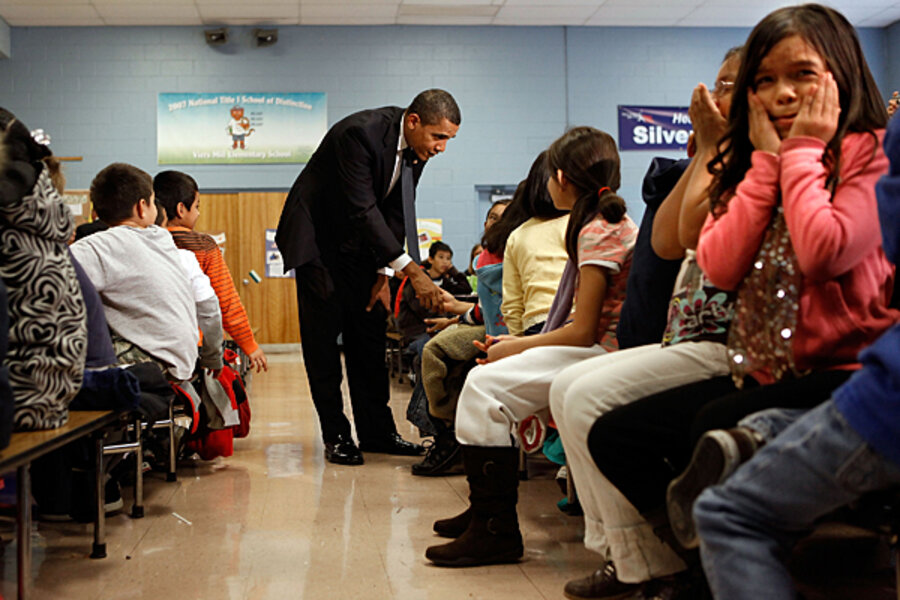New public school 'core standards': Which states might not sign on?
Loading...
A yearlong effort to craft common standards in math and reading for schools nationwide ended when education officials unveiled the new standards Wednesday.
Now the question becomes: Which states will adopt them?
The K-12 standards have many supporters, who laud them as rigorous and coherent. But not everyone agrees that national standards are needed. In addition, the challenges to implementing them are significant – potentially impacting textbook selection, teacher preparation, and a revision of standardized tests to align them with the new standards.
Already, Kentucky, Hawaii, Maryland, and West Virginia have tentatively signed on, and other states face pressure from the federal government to agree to adopt them by early August if they want a chance at winning Race to the Top money. All states except Texas and Alaska participated in creating them.
“If a significant number of states adopt by August, and another significant number by the end of the year, that will help create some momentum for more states to do it. States will be watching some of the bellwether states to see what they do,” says Michael Cohen, president of Achieve, which was a partner in developing the standards.
States to watch
In particular, he says, states will be watching Massachusetts – considered by most to have the most rigorous current standards – as well as states like California and Indiana.
The standards incorporate college and career readiness standards developed last year, and they try to present a vision for the skills and content a student should master at each grade level. They were developed by the Council of Chief State School Officers and the National Governors Association.
The English and Language Arts (ELA) standards eschew required reading, for the most part, with the exception of a few foundational documents like the Declaration of Independence and a Shakespeare play. An appendix gives detailed suggestions of the sort of texts that are appropriate at each grade level: Antoine de Saint-Exupéry’s “The Little Prince” in grade 4-5, for instance, and and Tennessee Williams’s “The Glass Menagerie” in grades 9-10.
“It’s vastly more rigorous and specific than the state standards we’ve seen over the years,” says Chester Finn, president of the Thomas B. Fordham Institute. “Based on my own quick read of the English Language Arts standards, I think this is a first-rate piece of work.”
In math, one of the big shifts is a move away from what some have derisively called the “mile wide, inch deep” nature of many state math curricula. These standards try to emphasize mastery of each idea, as well as a coherent structure that helps students move on to the next concept.
55 big-city schools back the standards
An open letter signed by 55 big-city school superintendents urged states to adopt the standards.
“These standards will give us, for once, a common definition of what academic proficiency means and what it doesn’t mean, rather than having 50 different definitions,” the letter said. “Not only will this help schools focus their efforts on one set of high standards, it will undercut the temptation by individual states to lower their standards or dumb down their tests to meet federal targets.”
The launch ceremony was consciously sited outside of Washington – in a Georgia school – to emphasize that this is a state-level effort. But pressure from the federal government – most recently through the coveted billions that will be awarded through the Race to the Top competition – has muddied that idea somewhat.
“I’m not sure the federal pressure is a very good thing,” says Mr. Finn, who acknowledges it may get some states to sign on to the standards just in hopes of getting the money, but without a real commitment to implement them correctly. “If you really want to make gains on the basis of this, you’ve got to change a lot of things in your system…. It’ll be a tough call for a few states.”
Related:





